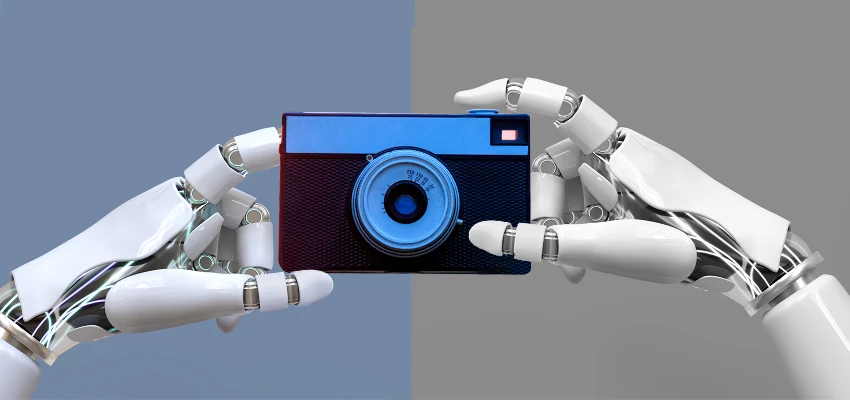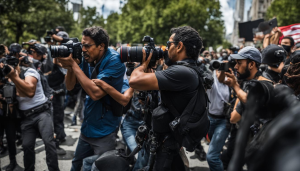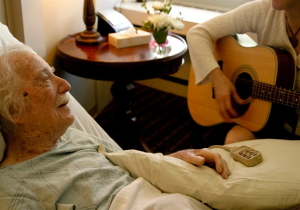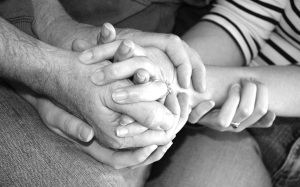AI in photojournalism is poised at the crossroads of innovation and tradition, as it offers both challenges and transformative opportunities for the field. With the rapid advancement of photography technology, photojournalists are grappling with the implications of artificial intelligence on their work, particularly regarding the preservation of visual history. Emmy award-winning visual storyteller Kira Pollack is at the forefront of this movement, exploring how AI can protect and enhance photojournalism archives that document the world’s essential events. By leveraging AI tools, Pollack aims to ensure that critical images remain accessible and maintain their integrity amidst the growing threat of manipulated photographs. As AI reshapes the landscape of photography, the dialogue around its ethical use is more relevant than ever, highlighting the delicate balance between creativity and authenticity in visual storytelling.
The integration of artificial intelligence into the world of photojournalism brings forth a fascinating examination of how technology can redefine image-making while preserving our collective narrative. As visual storytelling continues to evolve, the emergence of AI presents a duality; it challenges the authenticity of images while simultaneously offering solutions to safeguard photographic legacies. Kira Pollack’s work serves as a vital case study in understanding the role of AI in protecting the rich archives that capture the truth of pivotal historical moments. Through innovative applications of technology, there’s potential for photojournalists to enhance their storytelling, ensuring that the visual essence of our history is documented and preserved for future generations. This exploration into photography’s evolving nature invites broader conversations about the ethics of AI and its impact on visual representation in journalism.
The Impact of AI on Photojournalism
Artificial intelligence is reshaping the landscape of photojournalism in unprecedented ways, both posing significant threats and offering potential solutions. As AI technology evolves, there are growing concerns over synthetic imagery that challenges the authenticity of visual storytelling. The rise of deepfakes can create confusion and mistrust among audiences, as images that are manipulated to appear real can distort reality. This change places immense pressure on photojournalists to differentiate their genuine work from AI-generated content, leading to broader discussions about credibility in visual media.
However, the very tools that could undermine the integrity of photography might also be harnessed to support photojournalism’s archival efforts. Kira Pollack’s research illustrates how AI could assist in preserving photojournalism archives by cataloging and organizing vast collections of visual history effectively. This duality of AI presents a compelling narrative for the future of photography, raising essential questions on how these technologies might be ethically applied to ensure that the essence and authenticity of photojournalism endure.
Preserving Visual History Through Technology
At the heart of Kira Pollack’s initiative lies the urgent need to preserve the visual history captured by photojournalists. Many images documenting significant global events remain hidden in archives, their stories untold. By employing AI, Pollack aims to breathe life into these archives, transforming them from overlooked collections into accessible repositories of powerful visual narratives. This approach not only safeguards the memories encapsulated within these photographs but also gives contemporary audiences a window into the past, enriching their understanding of crucial historical moments.
Moreover, integrating AI technology into the management of photojournalistic archives could enhance the narratives tied to these images. Rather than merely serving as static records, these archives could become dynamic storytelling platforms. This is critical in the age where the public’s expectation is to engage with history in immersive ways. AI’s ability to analyze and categorize images means that stories can be contextualized more enrichingly, allowing viewers to grasp the depth and complexity of visual narratives that shape our collective memory.
Kira Pollack’s Role in the Future of AI in Photojournalism
Kira Pollack stands at the intersection of photography and technology, particularly as it relates to the evolving role of AI within the field of photojournalism. Her position as the Walter Shorenstein Media & Democracy Fellow allows her to explore innovative ways to leverage emerging technology without compromising the values that underpin photography. Pollack’s advocacy for responsible AI use acknowledges the potential for these tools to not only preserve existing visual narratives but to also usher in a new era of storytelling that respects the art form’s integrity.
As an advocate for the ethical deployment of AI, Pollack actively engages with various stakeholders, including photojournalists, technologists, and policymakers. This interdisciplinary dialogue is crucial for addressing the challenges posed by artificial intelligence, particularly in safeguarding authorship and ownership rights of photographers. By fostering discussions within the community about technology’s impact, she aims to ensure that photojournalism adapts thoughtfully and responsibly to the rapid advancements reshaping the media landscape.
Photojournalism Archives: The Need for Preservation
A significant concern in the field of photojournalism today is the preservation of extensive archives that tell the stories of our time. With countless photographs documented over the years, a staggering number go unseen. Photojournalism archives contain crucial historical documents that provide context and understanding about various events, many of which are pivotal in shaping societal discourse. The need to protect these visual treasures is amplified by the digital age, where risk for loss or distortion becomes increasingly apparent.
Utilizing technology to preserve these archives is not merely about saving images; it is about sustaining the narratives that they represent. Kira Pollack’s efforts to explore how AI can assist in preserving these vital records demonstrate an acknowledgment of their value beyond mere visuals. This pursuit aims to invigorate conversations around the importance of historical accountability in photography and annals of journalism, ensuring future generations have access to authentic visual history.
Ethics in AI-Driven Photography
As AI continues to permeate various aspects of photography, ethical considerations have become increasingly paramount. The risk of AI tools perpetrating copyright violations poses a significant threat to photographers, focusing scrutiny on how their images are used in training datasets without consent. Therefore, it’s crucial to address ownership and attribution to uphold the rights of original creators as the landscape of photography evolves under AI influence. Engaging in conversations about ethics in technology can help photojournalists understand the potential repercussions of AI’s expansive reach.
The dual nature of AI—both as a tool for innovation and a potential weapon against authenticity—demands careful navigation. Kira Pollack epitomizes a responsible approach, advocating for the use of AI to enhance rather than exploit visual storytelling. By emphasizing the preservation of integrity and truth in photography, it is possible to steer the narrative toward a future where technology complements photojournalism without detracting from its core principles.
AI as a Tool for Cataloging and Discoverability
An exciting aspect of AI technology in photojournalism lies in its capacity to revolutionize how archives are categorized and made discoverable. Traditional methods of organizing photographs often fall short of capturing the full narrative behind each image. By leveraging AI’s analytical capabilities, photojournalists can gain insights that enhance not only the organization of their work but also its accessibility to society at large. Properly cataloged archives can lead to greater engagement from audiences who seek to explore the stories behind impactful images.
Enhanced discoverability of photojournalism archives enables a broader audience to appreciate the intricate layers of visual history. By showcasing the depth of stories contained within images, AI can facilitate a richer interaction between the public and the art of photojournalism. Kira Pollack’s efforts highlight the potential for technology to bridge the gap between photographers and their audiences, cultivating a community that’s more informed about the significance of visual storytelling in shaping history.
The Role of Photojournalists in an AI World
The implementation of AI within the realm of photojournalism emphasizes the critical importance of retaining the human touch in the storytelling process. Despite the advancements in technology that enable automation in various aspects of photography, the emotional depth and context provided by seasoned photojournalists cannot be replaced. Kira Pollack’s discussions about integrating AI into photography stress the necessity for human insight and interpretation, advocating for a cooperative relationship between photographers and technology.
Valuable contributions from photojournalists should always remain at the forefront, as they bring nuanced perspectives that technology alone cannot achieve. Amidst the rise of AI-generated content, the unique artistry and storytelling capabilities of human photographers are more important than ever. Preserving this balance ensures that the future of photojournalism embraces new tools while upholding the values of empathy, context, and truth that define compelling visual narratives.
Addressing Concerns About Trust in Photography
In a world increasingly populated by AI-generated images, the issue of trust within photojournalism grows ever more pressing. The ability of AI to produce hyper-realistic imagery raises questions about the authenticity of visuals that the public consumes. Kira Pollack emphasizes the importance of distinguishing between genuine journalistic work and manipulated images, advocating for frameworks that support transparency in image sourcing. The challenge lies in reinforcing public confidence in photography as a reliable medium of storytelling amid rising skepticism fueled by technological advancements.
Trust becomes paramount as photojournalists navigate a landscape where misinformation can ripple through society at alarming rates. By utilizing AI to enhance the transparency and reliability of archival images, we can bolster the credibility of visual journalism. Pollack’s vision for responsible AI deployment serves as a framework by which the industry can foster a culture of accountability, ensuring that the rich history of photography is retained and honored in an era that bespeaks an evolving media landscape.
Looking Ahead: The Future of AI and Photojournalism
The relationship between AI and photojournalism is just beginning to unfold, with promising opportunities that could redefine the industry. As Kira Pollack’s research demonstrates, AI has the potential to support the curation and accessibility of photojournalism archives, paving the way for a richer, more engaged public experience with visual storytelling. As the lines between technology and traditional photography continue to blur, careful navigation of this terrain is essential for upholding the integrity of the craft.
Looking ahead, fostering collaborative efforts between technologists and photojournalists can shape an optimistic future for both fields. By prioritizing ethical practices and leveraging technology responsibly, there lies an opportunity to enhance the narrative powers of photojournalism while safeguarding the values that have been foundational to visual storytelling. As we usher in this new era, the collaborative insights of Kira Pollack and other innovative thinkers can help guide the responsible integration of AI into the art of photography.
Frequently Asked Questions
How is AI impacting photojournalism and photography technology?
AI is both a threat and an opportunity for photojournalism and photography technology. While it raises concerns about copyright violations and trust due to the creation of synthetic images, it also provides tools for preserving and cataloging the vast archives of photojournalists, thereby helping to maintain the integrity of visual history.
What are the benefits of using AI in preserving photojournalism archives?
The use of AI in preserving photojournalism archives can lead to more efficient cataloging and organization of images, making them easily discoverable. AI can analyze and contextualize photographs, providing deeper insights and preserving the photographer’s intent and legacy, which might otherwise be lost.
What challenges does AI present to the integrity of photojournalism?
AI poses challenges to the integrity of photojournalism, notably through the generation of fake images that can erode public trust. Additionally, issues of copyright and the unauthorized training of AI models on photographers’ works raise concerns about ownership and authorship.
In what ways can artificial intelligence photography enrich the storytelling of photojournalism?
Artificial intelligence photography can enhance storytelling in photojournalism by providing nuanced analyses of images that go beyond simple descriptions. By understanding emotions, context, and symbolism in photographs, AI can bring to light the deeper narratives and intents of photojournalists.
What role does Kira Pollack see for AI in the future of photojournalism?
Kira Pollack envisions AI playing a crucial role in safeguarding the visual history documented by photojournalists. She believes that rather than replacing authentic photography, AI can be used responsibly to preserve, organize, and reinforce the core values of photojournalism: truth, authorship, and memory.
How can AI help mitigate the risks that it poses to photojournalism?
AI can help mitigate its own risks by being used to responsibly unlock vast archives of photojournalism. By thoughtfully cataloging and organizing images with respect to the photographer’s rights and legacy, AI can aid in preserving the authenticity of visual narratives.
What are the ethical considerations of AI in photojournalism as identified by experts like Kira Pollack?
Experts like Kira Pollack highlight that ethical considerations include ensuring that AI technologies do not exploit photographers’ rights and that they respect ownership and authorship. There is a call for careful stewardship of AI tools to maintain the integrity of visual history.
How can photojournalists leverage AI to enhance visual storytelling?
Photojournalists can leverage AI by using it to analyze their work, uncovering insights about composition, emotion, and context that can enrich narratives. This can help create more immersive and dynamic experiences for audiences, enhancing the overall impact of visual storytelling.
What does the future hold for AI in the context of photojournalism according to Kira Pollack?
Kira Pollack suggests that the future of AI in photojournalism will be about harnessing technology to support the preservation of authentic visual history while addressing ethical dilemmas. This includes facilitating a dialogue among technologists, journalists, and ethicists to navigate the digital landscape thoughtfully.
| Key Points |
|---|
| Kira Pollack, an Emmy award-winning visual storyteller, explores how AI can preserve photojournalism archives while addressing ethical concerns over its usage. |
| AI presents a dual-edge sword: it poses threats through copyright issues and misinformation but also offers tools for cataloging and preserving photojournalism. |
| Pollack emphasizes the vital role of archives, which serve as living records of historical events that need to be preserved and made accessible. |
| Experiments with AI show its potential to analyze complex images and offer insights that enrich understanding of the context and emotions within photographs. |
| There is a critical need for dialogue about the implications of AI in photography, focusing on trust, ownership, and the integrity of the visual narrative. |
Summary
AI in photojournalism is both a challenge and an opportunity for the field. While artificial intelligence poses significant threats to authenticity and copyright in photography, Kira Pollack’s efforts highlight its potential to preserve the invaluable archives of photojournalists. By employing AI to catalog and analyze images, there is hope to safeguard and enhance the visual storytelling that captures the essence of our history. The digital era demands a thoughtful approach to ensure that these visual narratives remain trustworthy and accessible, paving the way for a more informed audience.




